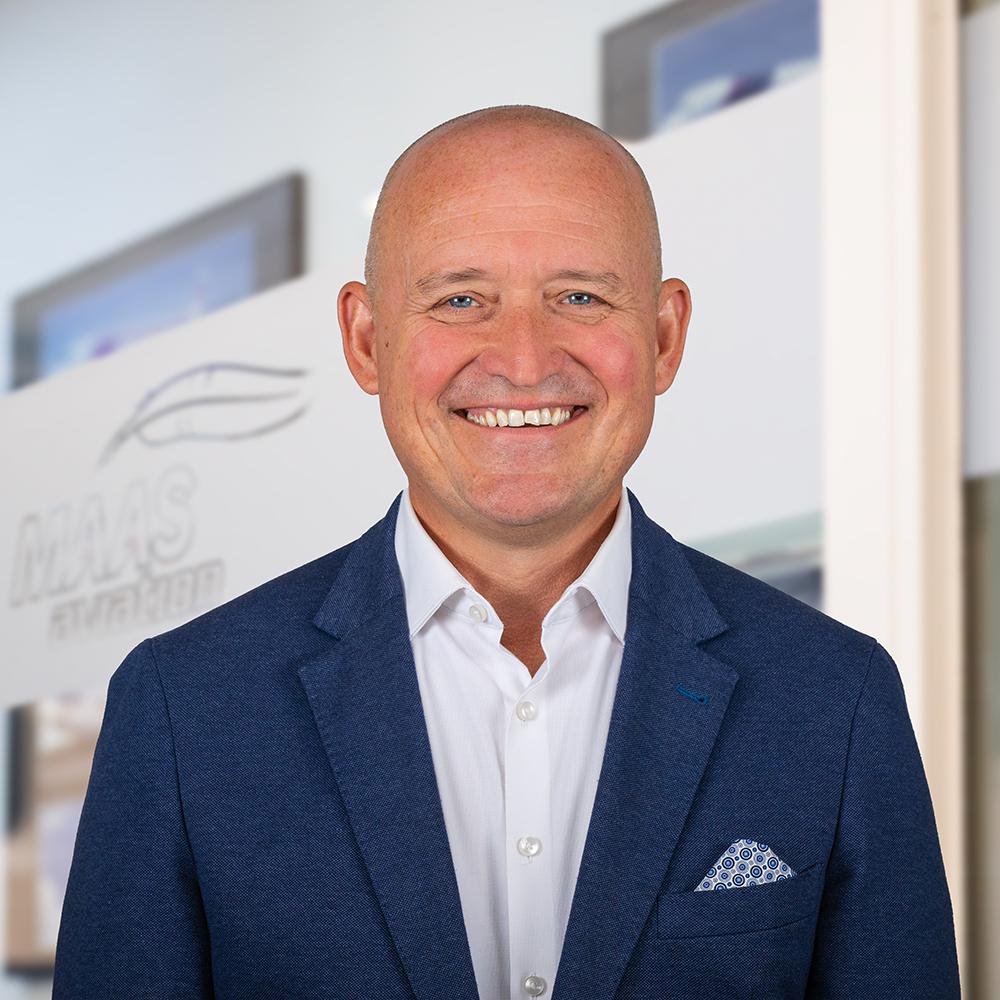
Richard Marston, chief commercial officer of MAAS Aviation
Richard Marston, chief commercial officer of aircraft painting specialist MAAS Aviation, speaks with Aviation Week about painting trends, sustainability initiatives and its new paint shop in Lithuania.
At MRO Latin America this year we heard from an airline that reported major difficulties finding paint slot openings. How booked have MAAS Aviation’s facilities been recently, and are you seeing increased demand from customers in any particular regions?
There is no doubt the global pandemic had a hugely negative impact on the aircraft painting sector, as it did for most of the aviation industry, which was felt at both OEM and MRO level. We were extremely fortunate that our major MRO customers continued with their repainting programs throughout the winter months, so we didn’t feel the effects as much as some in our arena, but it’s fair to say it was a difficult time for all.
We now see a really strong trend of recovery taking place, but there are still many new difficulties to face. Factors such as supply chain and production issues, workforce challenges and escalating operating costs mean that while demand for painting slots is high, there are still barriers to overcome as the sector gets back to ‘normal’ operating levels.
We specialize in narrowbody aircraft painting, and we are seeing very high demand across EMEA for winter slots, running from the start of November through to the end of March or even April. Narrowbody painting is seasonal, as most airlines operating this type of aircraft need their fleet in the air during the peak period, starting from the Easter break and running up until the end of October.
The widebody market, on the other hand, is less seasonal so demand for painting across all regions remains strong throughout the year, as there is limited market capacity.
What do you think is driving increased demand for painting services?
As consumers and business travelers take to the air again in hordes, the increase in passenger traffic is directly driving the requirement for aircraft to be painted/repainted to ensure they are ready for the season. This has led to a very busy winter period for us across our MRO facilities in the Netherlands and Lithuania. That said, we are predicting demand will drop, at least for narrowbody aircraft, over the shoulder period and summer months, with fewer transitions expected this year compared to 2022.
MAAS Aviation opened its new Kaunas Airport paint shop in 2021, where it is partnered with FL Technics on paint services. What has been the progress with this facility, and how do partnerships play into MAAS Aviation’s global presence?
Our partnership with FL Technics has been a key factor in the success of our Kaunas, Lithuania facility. To launch a new, state-of-the-art two bay paint shop during a global pandemic, and increase our MRO painting capacity by 40%, it was essential that we had a strong partner in place. The collaboration has been really positive for all parties, offering a ‘one-stop shop’ MRO solution that is cost effective and minimizes downtime. Customers of both FL Technics and MAAS really value the convenience of having all capabilities available at one location, with lessors in particular driving demand.
Aircraft painting is notorious for generating a lot of waste and toxic materials. What types of sustainability initiatives does MAAS Aviation have in place to make its operations more eco-friendly?
At MAAS we take our environmental responsibilities extremely seriously and do everything possible to limit our impact on the environment. Across our global sites, we have implemented a number of processes and technologies designed to reduce waste and protect our surroundings, while maximizing the quality and longevity of the work we deliver.
Our facilities are climate controlled and designed to manage waste from our processes responsibly, with materials recycled wherever possible. The latest example of this is a new water treatment plant that is being installed at our Kaunas facility. When up and running, the system will process chemical waste from our daily operations and separate the water from the contaminants, which are then turned into dry waste to enable cleaner and easier disposal.
We design, build and operate all of our own paint shops, so this allows us to ensure environmental solutions are considered from the outset. All the MAAS facilities are ISO 14001 Environmental Management certified and boast underground sump systems built below the hangar floor to ensure no waste chemicals or contaminated water ends up on the apron or local area. We have also developed our own unique recycling technology that allows us to recover 80% of the solvents we use. These are then redeployed for cleaning equipment, such as paint guns, lines and pipes. The vast amounts of dry materials we use throughout the painting process—paper, plastic sheeting, tape etc.—are also fully recycled, and we have introduced an electric company car policy throughout the business.
We work closely with all the major aircraft paint manufacturers and always use the latest products delivering chrome-free solutions, and basecoat clearcoat systems that not only reduce painting time and waste, but also reduce aircraft weight, improving fuel efficiency and lowering emissions.
What trends are you seeing in the aircraft paint segment? Are designs or products leaning in a particular direction?
In recent years there have been huge technical advances in products, which has led to a real shift in preferred materials. Today the market predominantly uses basecoat clearcoat paint systems and the latest structural repair manual systems. These products, such as Socogel/Bogel which have replaced the chromated Etch/Wash primers, are a lot more reliable and give greater longevity of paint finish as well as being much more environmentally friendly.
In terms of livery designs, there will always be special, bespoke designs to mark a special occasion or activity, but in general we don’t see airlines moving to more complex liveries.




